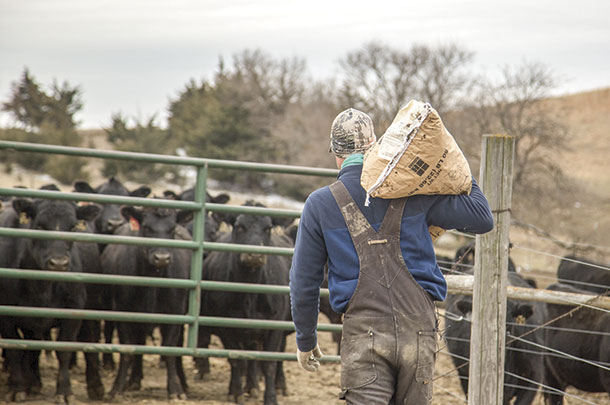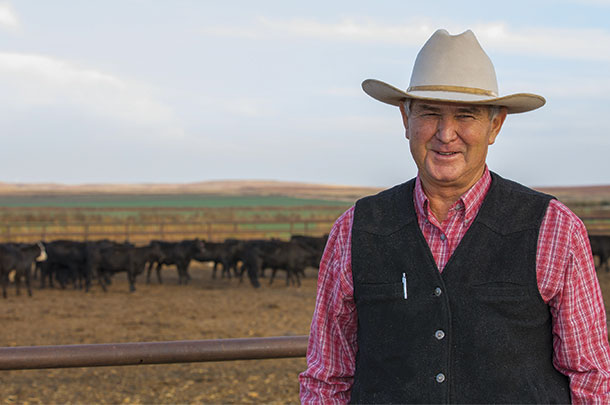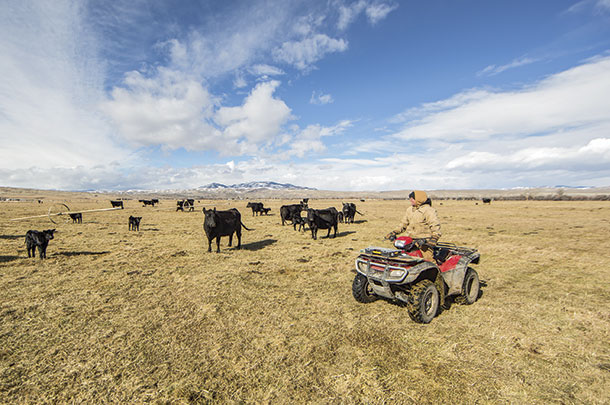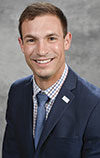For producers, identifying the unique challenges in your region is key to preventing scours and ensuring a healthy calf crop this year.
Let’s take a deeper look across three key U.S. production areas to help set scours straight for 2017: the Southeast, Midwest and Mountain West.
Southeast
Unique challenges:
- Heat and humidity
- Excess mud
- Commingling as a result of smaller calf herds
Known for its brutally hot summer and early fall, heat- and humidity-related stress present a real threat for calving scours in the Southeast.
“Calves seem to never recover completely from the scours,” says Charles Johnson, a cow-calf producer from Hiddenite, North Carolina.
Heat stress can affect cattle at temperatures as low as 73ºF and its impact on overall productivity, and even mortality, can be significant.
Signs of heat stress beyond scours include reduced feed intake, rapid shallow or open-mouthed breathing (panting), foamy saliva production and increased water intake. To help mitigate these issues this year, producers should provide additional shade (including tree cover), increase pasture grazing rotations and ensure there is an ample cool water supply.
A temperature increase from 70ºF to 95ºF can increase a calf’s total water requirements by about 2.5 times. So be prepared to monitor the elements for your cattle.
Furthermore, two additional unique threats exist in the Southeast. High levels of precipitation resulting in excess mud and the commingling of different calf herds at the sale barn (which is most relevant to weaned calves) can both create increases in scouring.
Pathogens are opportunists – so as mud cakes on calves, a perfect breeding ground exists for the growth and spread of harmful bacteria.
The generally smaller herd sizes found across the Southeast (for example, the average herd size in Kentucky is only 27) also mean more mixing of calves at the sale barn that have not been exposed to new or different potential diseases. To prevent scours, a quality nutritional program fortified with technologies designed to build gut integrity is especially critical.
Midwest
Unique challenges:
- Large swings in temperature
- Constant wind
- Receiving cattle
The Midwest is known for having temperature swings of more than 40 degrees in a single day, and this unpredictability is also a big threat for scours.

“We have a lot of little baby calves susceptible to [weather], and we could have a wreck within two days,” explains Brian Goff of B-Gee Angus in Linwood, Nebraska.
To avoid potential issues, momma cows must be set up to have a clean gut and to pass on as much quality colostrum to their calves as possible. This starts by bolstering the cow with a quality organic trace mineral program and a good nutritional base at a minimum of 30 days before calving.
Planning is key so as soon as a baby calf hits the ground, it is ready to handle the large swings in temperature and the constant winds that can make peak performance a challenge in the Midwest.
As a solution to combat temperature swings and the wind, producers across the Midwest are seeing the impact of utilizing nutrition to prevent scours.
“We were having difficulties with scours in newborn calves,” says Roger Giles of Giles Ranch in Bucklin, Kansas, but through improving their nutritional program, they “went down from doctoring 70 percent to only doctoring 1 to 2 percent of calves.”
 Additionally, an aspect of beef production unique to the Midwest is the volume of calves they receive from other parts of the country. Calves sometimes travel 1,000 or more miles before they hit a backgrounding or finishing yard.
Additionally, an aspect of beef production unique to the Midwest is the volume of calves they receive from other parts of the country. Calves sometimes travel 1,000 or more miles before they hit a backgrounding or finishing yard.
Transportation and receiving can undoubtedly be the most stressful events in a calf’s life, and coupled with the mixing of different calf herds from other locations, a calf’s immune system can be easily compromised.
Midwest producers need to be quick to provide electrolytes in order to address any issues with dehydration and monitor new calves closely to make sure they are getting up on feed as fast as possible.
Mountain West
Unique challenges:
- Extreme cold
- Constant snow cover
- Soil leaching
“Scour storms” (aka fast-evolving scour outbreaks) are a worst nightmare for producers like Lindsay Seidensticker of Giem Ranch in Twin Bridges, Montana. In the mountain West, extreme cold through many parts of the year, especially during late fall calving, can create a real issue.

Along with scours, severe respiratory issues and pneumonia caused by cold weather put incredible amounts of stress on the immunity of a herd.
“As vaccines have improved, the scours problem has decreased but is still there and significantly impacts the amount of time spent doctoring calves,” Lindsay says.
These challenges can even take place in neighboring states such as Oregon and Washington, and the constant snow cover and leached soils characteristic of the mountain West can create serious mineral deficiencies in cattle.
Long winters open cattle up to molybdenum toxicity, and coastal cattle are known for being low in selenium, both of which can lead to cryptosporidium and scours, hurting fertility and overall immunity. As a remedy this year, be sure to incorporate organic trace minerals into your diet to best support your herd’s defense mechanisms against infection and scouring.
Producers in all regions face scour challenges. Inevitability, there will be overlapping issues among regions (i.e., the Midwest can also be extremely cold), but the best guide for producers, regardless of region, is always two-pronged: Practice high-quality management techniques that meet your unique challenges and proactively implement a well-rounded nutritional program to combat scours before they ever start.
With this strategy in place, 2017 will be the year you set scours straight to drive more profitability within your operation. ![]()
PHOTO 1: Charles Johnson, Johnson Farms, North Carolina
PHOTO 2: Brian Goff, B-Gee Angus, Nebraska
PHOTO 3: Roger Giles, Giles Ranch, Kansas
PHOTO 4: Lindsay Seidensticker, Giem Ranch, Montana. Photos provided by Brian Lawless.

-
Brian Lawless
- Business Development Manager
- Alltech
- Email Brian Lawless







